
Nobody expected a smooth transition when Apple parted ways with the 3.5mm audio port. And yet, iPhone users still have plenty of audio options between using Bluetooth earbuds, a Lightning-to-3.5mm adapter, or a pair of Lightning headphones. The real reason to go for the latter? High-resolution 24-bit audio, baby. Here are our picks for the best Lightning headphones to use with your iPhone.
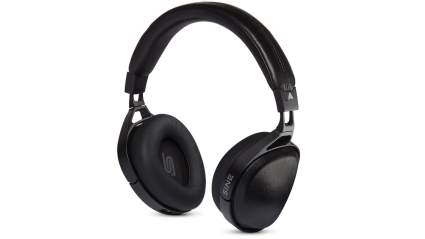
|
Amazon Customer Reviews
|
Price: $399.00 Shop at Amazon | Shop now Read our review |
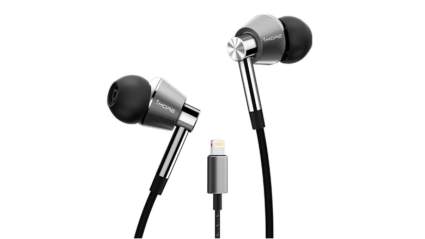
|
Amazon Customer Reviews
|
Price: $99.00 Shop at Amazon | Shop now Read our review |
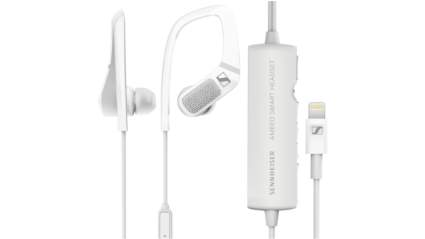
|
Amazon Customer Reviews
|
Price: $52.95 Shop at Amazon | Shop now Read our review |
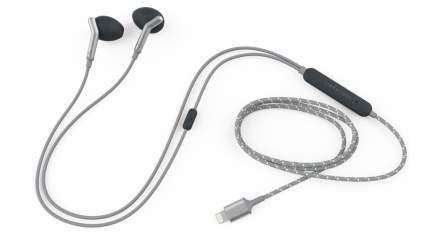
|
Amazon Customer Reviews
|
Price: $68.00 Shop at Amazon | Shop now Read our review |
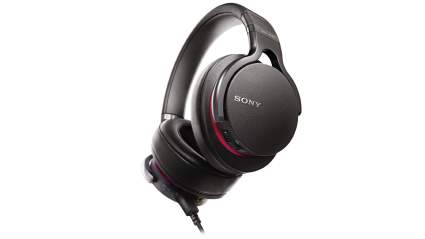
|
Amazon Customer Reviews
|
Price: $449.89 Shop at Amazon | Shop now Read our review |
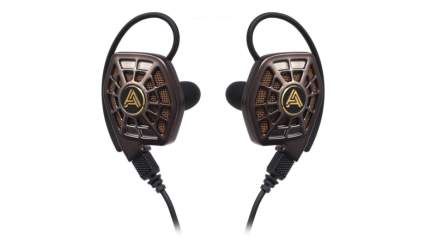
|
Amazon Customer Reviews
|
Price: $469.99 Shop at Amazon | Shop now Read our review |

|
Amazon Customer Reviews
|
Price: $109.09 Shop at Amazon | Shop now Read our review |
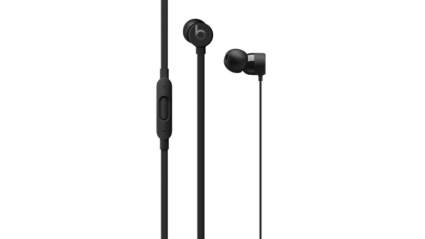
|
Amazon Customer Reviews
|
Price: $59.95 Shop at Amazon | Shop now Read our review |
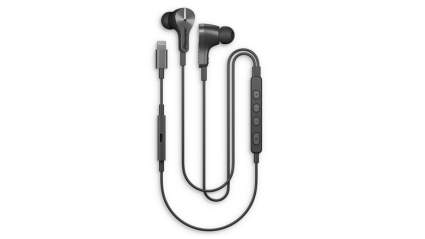
|
Amazon Customer Reviews
|
Price: $84.34 Shop at Amazon | Shop now Read our review |
-
1. Audeze Sine
Pros:- Interchangeable Lightning cable with high-end DAC and headphone amp
- Wide frequency response and sound stage
- Physically stored EQ control via Audeze app
Cons:- On-ear design can cause listener fatigue
- Cipher cable is somewhat flimsy
- High price tag
The Sine headphones represent the top end of boutique Lightning headphones from hi-fi company Audeze. They are expensive but far from the audiophile company’s most expensive pair, and the top quality sound makes it all worth it for those who crave only the best Lightning headphones.
These cans are up there with the top of the line 3.5mm headphones, and they have the benefit of not needing an external amplifier.
This is because its “Cipher” Lightning cable houses its own headphone amplifier and 24-bit DAC, which ensures via high-resolution playback that no detail is missed. This is something you can expect from any Lightning headphones, but not at the same level of quality that Audeze offers.
In terms of build quality, the Sine pairs awesome machined metal parts with a premium soft leather finish. The headphones come with a standard 3.5mm cable and a special Cipher Lightning cable.
This flat Cipher cable has built-in volume controls, play/pause, and an inline mic. On top of that, it can also digitally store two EQ profiles that you can set up within the Audeze mobile app. Like with the EL-8, the cable is still a little flimsy for how important to the sound it is.
Although the Sines are much slimmer than full over-ear headphones, these are far from the most portable choice. In my opinion, on-ear headphones are best kept to the home, where they can be enjoyed without fear of extra wear and tear. But given the convenience of the built-in DAC, you may not be able to resist taking these out.
The planar magnetic drivers give the earcups a slim profile, as they need far less space to displace air thanks to the digital amp. They also sound fantastic, offering the same frequency response of 10Hz – 50kHz as its bigger brother.
It is at this price point where the nuances of uncompressed audio really shine, and a trained ear will notice a difference between a 128kbps stream and a lossless recording.
The soundstage is deep, the dynamics are spot-on, and all around, this sound is seriously hard to match over a traditional analog connection unless you add a high-end DAC into the mix.
By combining the two, Audeze has created a very expensive line of digital headphones, and even though these are among the least expensive that the company makes, only the dedicated audiophiles will make the upgrade out of sheer faith for the Lightning standard.
Find more Audeze Sine information and reviews here.
-
2. 1MORE Triple Driver In-Ear Headphones
Pros:- Triple drivers deliver clear and accurate sound
- Wide frequency response and sound stage
- 5-in-1 inline controller
Cons:- Lacks durability
- Cables transfer telescopic sound
- Muffled lows
1MORE’s headphone philosophy is oddly summed up by their name: more is better. Ironically, their Triple Driver headphones likely have four more drivers than your current pair of lightning headphones.
Each earbud has three drivers total, each of which puts out a different frequency of sound. Naturally, this creates a far more sophisticated sound than that created by lone full-frequency drivers, but you have to hear the difference to believe it.
Thanks to the 24 Bit / 48 kHz DAC built into all Lightning headphones, the Triple Driver headphones can pump through lossless audio formats for the clearest and most accurate sound.
Each 1MORE earbud has two balanced armatures, which act as mini tweeters, delivering the crisp highs that carry the emotion of the music. Their single dynamic driver gives them mid to low frequencies their stunning presence.
This driver arrangement works well to give the music space and detail, and the clarity of the highs is a highlight from my own listening test.
Playback is easy to control with inline controls. They allow you to accept calls, activate voice control, adjust volume, and change tracks.
These 1MORE headphones come with a solid selection of nine different eartips, ensuring you will find the right one for a solid seal.
All in all, I can’t say enough good things about the Triple Driver headphones from 1MORE. It may seem at a glance like they are relying on a gimmick alone, but once you give them a listen, the audio speaks for itself.
Find more 1MORE Triple Driver In-Ear Headphones information and reviews here.
-
3. Sennheiser Ambeo Smart Headset
Pros:- 3D audio recording
- Wide soundstage
- Detailed and balanced audio
Cons:- Bulky design
- Bass could be stronger
- Ear hooks don't fit all ears
The Sennheiser Ambeo Smart Headset is more than a pair of Lightning headphones. It is a technical demonstration of all the various uses that Lightning audio has on a smartphone.
This MFi-certified pair of headphones sounds great, which is something you can expect from any Sennheiser audio equipment (especially in this price range). The soundstage is naturally wide as these headphones are designed to play (and record) binaural audio. It faithfully recreates a 3D sound space without forcibly panning different audio elements apart.
The overall sound of the Ambeo headset is clear and rich, with crisp highs and smooth mids. The bass, while present, is not particularly driving, so those who prefer a more bass-heavy sound signature might want to consider other options.
The big draw of this headset is the active noise cancelation powered by two omnidirectional microphones in the earpieces of the headset. It is incredibly effective at blocking out ambient noise—so much so, in fact, that the Ambeo Smart headphones have a dedicated button to enable the transparent hearing function that mixes a base level of ambient noise back in so you can be more aware crossing the street or navigating a crowded area.
An added feature that you don’t see on most ANC headphones is the ability to record high-quality 3D audio directly to your iPhone. This feature is great for recreating spatial audio experiences like walking through a crowd. It also works great when taking calls.
All you have to do to record is to open up your camera app and hit the record button on the inline control cluster. This control cluster also houses volume buttons, a pause/play/skip button, and a button to toggle different levels of noise cancelation.
These earbuds come with a set of small, medium, and large eartips to ensure the best seal and most comfortable fit, however, the ear hooks are a one-size deal so hopefully you don’t have abnormally large ears.
Considering their unique use, the Sennheiser Ambeo Smart Headset isn’t going to be for everyone. But if you like recording “found sound” audio and live blogging, they are worth their slightly higher price tag.
Find more Sennheiser Ambeo Smart Headset information and reviews here.
-
4. Libratone Q Adapt In-Ear
Pros:- CityMix ANC offers variable isolation levels
- Wide frequency response with a balanced low-end
- Solid build quality
Cons:- Awkward fit
- Cord is only partially braided
- Muddled low-end
The Q Adapt headphones from Libratone are another solid option for Lightning headphones with noise cancellation.
The Q Adapt headphones use proprietary CityMix active noise cancellation, which works fantastically at shutting out traffic sounds, office chatter, and gym clattering. It has four different settings to control the level of ambient noise to let in that can be controlled via the Libraton App.
This nuance makes a big difference in how you enjoy your portable audio and promises to enhance the already fantastic digital signal processing of the Q Adapt. Libratone’s signature sound typically offers a balanced low-end with electrifying highs.
This device also boasts a sturdy design, with beefy earbuds and a quality fabric-wrapped cable below its inline controls. These controls have an inline mic, plus volume control.
The inline controls also house the cans’ DAC and amplifier. The headphones include four different pairs of eartips for a wide selection of fits. All in all, there are no headphones that quite match up what the Q Adapt are capable of yet, so as far as ANC headphones, this one’s a winner.
Find more Libratone Q Adapt In-Ear information and reviews here.
-
5. Sony MDR1ADAC DAC/Amplifier-Integrated Headphones
Pros:- Versatile digital outputs
- Rich and detailed audio playback
- Lightweight and comfortable
Cons:- DAC needs an internal battery to supplement Lightning power
- Slightly accentuated bass impacts balance
- No online mic
As far as digital output headphones go, Sony’s MDR1ADAC is a jack of all trades. Not only does this pair of headphones offer a detachable Lightning cable, but it also includes a USB-C cable, a 3.5mm cable, and proprietary connectors for the Walkman and Xperia mp3 players.
These folding over-ear headphones aim to provide the best digital signal processing at a reasonable price with their built-in DAC and amplifier.
One strange quirk of the DAC on these headphones is that it cannot be driven by Lightning power alone, and has a rechargeable battery that offers about 7.5 hours of playback.
Analog playback modes do not require this battery to be on, but using the Lightning cable does. But with the inconvenience of a limited battery life comes the convenience of a more powerful DAC and amplifier.
The end result of this design choice is that audio sounds fantastic on the MD1ADAC. Its 40mm drivers can achieve fantastic volume (controllable from the left earcup) and can output audio at 192kHz/24-bit.
Many other headphones will fall short of this level of detail, which gives these cans the edge in terms of an intricate reproduction of sound.
The midrange on these headphones is nice and clear and is complemented by expansive highs that help round out the frequency spectrum. The low-end, however, is a little sloppy, with a natural EQ bump blowing some sounds out of proportion.
Again, many prefer a sound profile with thumping bass, but given that these headphones are geared towards the accurate playback of uncompressed FLAC or WAV files, I consider this a downside to an otherwise balanced sound.
On the plus side, there is no distortion, even at the highest audio levels. Also, the somewhat shallow earcups are incredibly plush, making them one of the most comfortable headphones on the list.
But this is yet another headphone with no inline mic, which makes me wonder: is it seriously that hard to shove a pinhead-sized microphone into your high-end headphones?
My trite observations aside, Sony’s MDR1ADAC packs a lot of promise and features into one pair of headphones. This pair serves a variety of digital uses, and as long as you don’t mind periodically having to plug into a MicroUSB, these will be a top pick for many iPhone 8 converts.
Find more Sony MDR1ADAC/B DAC/Amplifier-Integrated Headphones information and reviews here.
-
6. Audeze iSINE20 In-Ear Headphones
Pros:- Interchangeable Lightning cable with high-end DAC and headphone amp
- Wide frequency response and soundstage
- Physically stored EQ control via Audeze app
Cons:- Semi-open design means sound leaks out
- Cipher cable is somewhat flimsy
- High price tag
The Audeze iSINE20 headphones represent this audiophile company’s top in-ear monitor technology.
Those who want Lightning headphones to enjoy lossless audio will only wish they could afford these $600 IEMs.
Their planar magnetic drivers are designed to deliver crystal clear sound with minimal distortion and maximum bass response.
On most tracks, the bass will be the first sound to capture your attention, but that’s not to say that these headphones are unbalanced.
In fact, they are quite neutral in sound signature. Regardless, the frequency range is so wide, that you will almost immediately notice the difference in the low-end details.
There is only so much I can write about this sound, but still, the picture won’t be complete until you hear them for yourself. The only downside to their sound design is that their semi-open design allows sound to leak through enough that others nearby will hear it.
These headphones include plenty of eartips and ear wings to find a comfortable fit though. These headphones will be a lot louder and clearer for you than it will for bystanders.
Its flat and durable Lightning cable can be removed and replaced with a 3.5mm jack, so you can use these headphones with just about any setup.
Both cables have built-in inline controls with volume controls, play/pause, a microphone, and a DAC stored inside.
Any other features of this headset are either overshadowed by its sound or its price tag. But most likely both. If you are looking for the absolute best Lightning IEMs, then you really don’t need to look any further.
Find more Audeze iSINE20 In-Ear Headphones information and reviews here.
-
7. JBL Reflect Aware
Pros:- Sweatproof, reflective, and durable sports design
- Adaptive noise control offers variable isolation levels
- Detailed and balanced audio
Cons:- Internal amplifier could be better
- Muffled mids
- So-so internal mic
The JBL Reflect Aware is the first Lightning headphone option that is specifically designed for sport use, and it has a compelling laundry list of features that prove why it will be one of the best.
These earbuds designed from the top down for versatile sport use, with a sweatproof coating for the heaviest of workouts, plus a reflective cable that improves visibility on runs. The three sets of sport eartips lock into place easily and provide a great seal for a full sound.
The Lightning cable has inline controls for volume and play/pause, plus an inline microphone for taking phone calls. The control box also houses the button to enable the Adaptive Noise Control feature, which provides comprehensive control over how much of your environment bleeds through the headset.
This active noise canceling pairs with the JBL Headphone app to allow individual control over the noise isolation on the left and right channels. At its highest setting, noise canceling is excellent, creating a serenely quiet bed on which your music can sit.
Unfortunately, the lowest ANC setting, which should theoretically let you hear the outside world clearly without taking off the headphones, lacks polish, so you will still need to take these earphones out to have a conversation.
In terms of audio performance, the Reflect Aware’s 14.8mm drivers pack a solid punch without compromising fidelity. For their size, the bass is solid and makes for a nicely balanced overall sound.
The frequency response range is so-so, so you won’t be discovering new highs in your favorite recordings, but the clarity and detail you get from the audio are still fantastic.
The max volume is somewhat disappointing, but if you want your music to come through more, you can always crank up that noise canceling for a more focused sound.
JBL’s Reflect Aware headphones are a sure pick for gym rats and runners, but the sound quality is also good enough to stand out on its own. For the price, you will want to make good use of the active noise canceling feature, otherwise, you will find Lightning headphones with far better bang for your buck.
-
8. Beats Urbeats3 Lightning Earphones
Pros:- Clear sound with boosted low end
- Comfortable eartips
- Solid build quality
Cons:- Low max volume
- Heavy cable creates telescopic sound
- Muddled mids
The Beats Urbeats3 are a durable earbud option for fans of the bass-heavy Beats signature sound. The company has dialed back its totally absurd low end boosting to a tasteful warm sound that provides just enough accent to amplify hip-hop and electronic music.
With a proper seal, these cans do a fantastic job of isolating outside noise (though they aren’t properly noise isolating). The sound is rich and clear, and the low end has a nice bump to it.
The max volume was sufficient for me, but many other reviewers criticized it for being a little low. Don’t listen to your music too loud, folks, you only have two ears.
The flat cable is durable and tangle-resistant, but it can pull your earbuds out if you don’t find a perfect fit from its four included eartips. If you do find a good fit, they are an incredibly comfortable pair of headphones.
The cable has inline volume controls and a microphone to take phone calls. The earbuds are magnetic and clip together for storage. They come with a carrying case.
Find more Beats Urbeats3 Lightning Earphones information and reviews here.
-
9. Pioneer Rayz Plus Earbuds
Pros:- Active noise cancellation
- Clear and accurate sound
- Built-in charge through port
Cons:- Noise cancelling causes some distortion
- Muffled mids
- Telescopic sound
The Rayz Plus headphones from Pioneer are hands down the best Lightning headphones for those who need sound isolation, as they are one of the few that offer it.
The Rayz Plus actually uses its built-in microphone (normally used for phone calls) to adapt its active noise canceling to the sounds around you, allowing for better sound isolation than you get from eartips alone.
The microphone also works to recognize voice assistant commands so you can invoke Siri without even having to push a button.
In addition to housing the microphone and DAC, the inline controls also have buttons for volume control and enabling the noise canceling. There is also a smart button that can be programmed to do any number of things, including opening your favorite app or muting a call.
The cables and earbuds themselves are lightweight and durable. Towards the bottom of the cable, you actually have a charge through Lightning port that allows you to power your phone without removing your headphones.
In terms of sound quality, the Rayz Plus are clear and accurate. They’re basically everything you want out of a pair of headphones.
The low end is present enough to give a nice kick to your tracks, while the high end has plenty of room to breathe.
The sound is further characterized by balance and richness, sporting no unnatural bumps or valleys.
The sound can be further improved via the free Rayz Plus app. It has customizable EQ presets, as well as smart button settings and other controls.
The only downside is that you will occasionally hear distortion when the noise canceling is active. If you want a detailed listening experience, you may want to turn the ANC off.
This shortcoming aside, these are phenomenal headphones. It surpasses the competition in its price range and earns a sure spot among the best Lightning headphones.
Find more Pioneer Rayz Plus Earbuds information and reviews here.
Why Lightning Headphones?
Considering that modern Apple phones ship with a pair of Lightning Earpods and a 3.5mm-to-Lightning adapter in the box, it may seem questionable to shell out extra cash on a pair of headphones that can only be used within the iOS ecosystem.
However, Apple's move towards Lightning audio isn't just a money grab, as it also allows for higher quality audio playback.
As this article from LightningCans explains, Lightning audio is purely digital, while a 3.5mm jack requires your phone to convert its digital signal into an analog one to push sound out through your headphones.
The conversion of signals is one of the main causes of audio quality degradation. The audio is broken down into chunks of data, creating a compressed version of the original sound file.
Lightning headphones, on the other hand, have their own built-in DAC (digital-to-analog converter). Cheaper Lightning headphones won't demonstrate this difference quite as well, though, as the newest iPhone has a nice internal DAC itself.
However, on the best Lightning headphones, their internal DAC will outperform the iPhone, with the best of the best handling lossless 48kHz digital output.
Lightning headphones can also draw power from the phone itself, allowing them to provide features like built-in amplifiers and active noise-canceling without batteries.
That's worth a paradigm shift to me.
Why Bluetooth Still Kind Of Sucks
With constant rumors floating around that Apple will one day ditch the Lightning port, many people look to Bluetooth wireless headphones as the future-proof option for portable audio.
Apple has put stock in the tech themselves with the coming of the AirPods. There are even Bluetooth adapters for your current headphones (as if you needed more listening options).
But depending on how Bluetooth wireless grows in coming years, these options could be moot for audiophiles, because on a technical scale, Bluetooth sounds pretty terrible. It is glitchy, low-bitrate, and supports clashing codecs that will leave you with less than optimal sound.
Lightning currently seems to be the best option for delivering hi-fi audio. Lightning headphones can take on lossless formats like FLAC and WAV that let you enjoy audio without compression.
Still, Bluetooth remains one of the most convenient listening options, so at the end of the day, the choice is up to you.
See Also
13 Best Airpod Cases: Your Ultimate List